
I agree Our site saves small pieces of text information (cookies) on your device in order to deliver better content and for statistical purposes. You can disable the usage of cookies by changing the settings of your browser. By browsing our website without changing the browser settings you grant us permission to store that information on your device.
The Clinical Chemistry platform performs comprehensive testing of blood, urine and tissue samples related to clinical chemistry, haematology, immunology and endocrinology. These analyses are highly recommended in gene- and drug- intervention studies to screen for organ-specific metabolic defects and / or to identify diagnostic indicators, such as for inflammation, cancer, or anaemia.
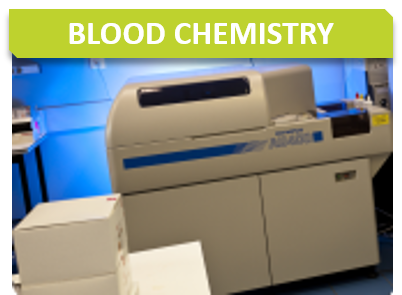
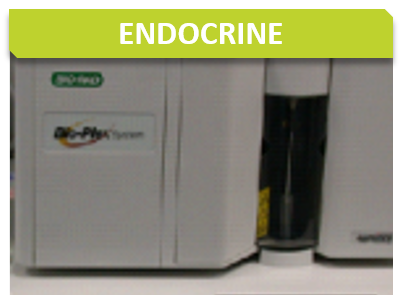
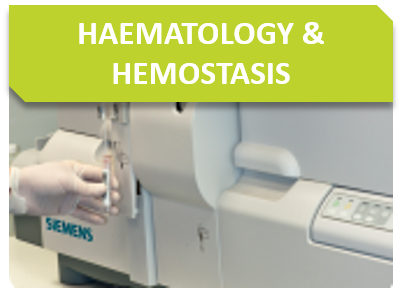
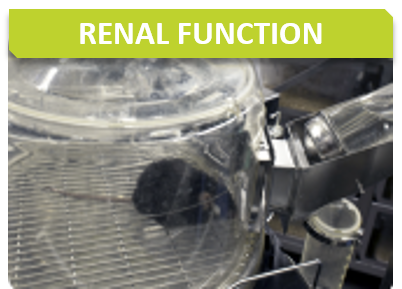
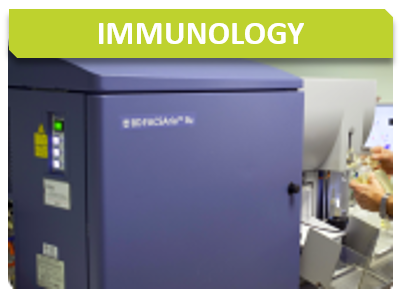
Tail-vein clotting test in warm saline indirectly examines the volume of blood loss before spontaneous staunching. Proposed first-line analysis for potential clotting disorders with second-line analysis by ex vivo coagulation testing.
The measurement of various blood metabolites, ions, and enzymes provides a primary screen for function of major metabolic organs such as kidney, liver, gastrointestinal tract, as well as for lipid and glucose homeostasis.
A panel of parameters is proposed, including:
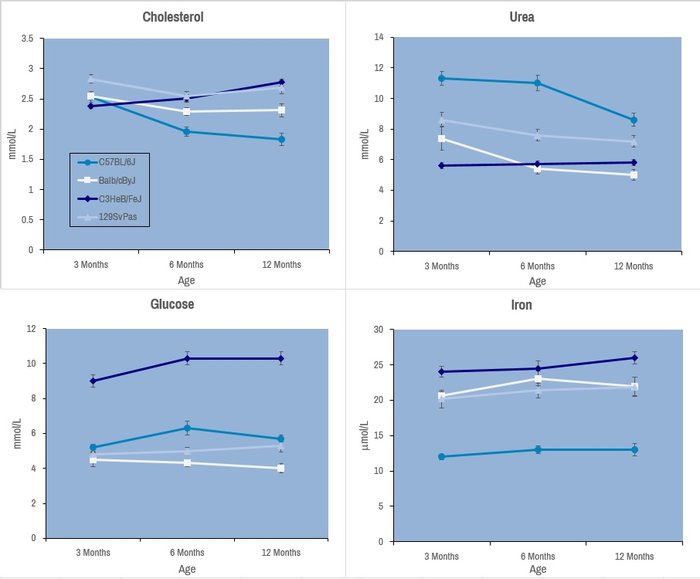
Selected plasma chemistry data from female mice (N=20 per line) of common laboratory strains at different ages (Champy et al. Mammalian Genome 2008). Error bars reflect ± SEM.
These tests are performed with an AU-480 automated laboratory work station (Beckman Coulter France SAS, Villepinte, France).
The measurement of numerous hormones that regulate metabolic function and growth is available (Insulin-like Growth Factor I (IGF-I), Thyroxin (T4), Triiodothyronin (T3), Growth hormone (GH)...). Some steroid hormones can also be evaluated by immunoanalysis in mouse plasma (testosterone, progesterone, corticosterone...).
Determination of prothrombine time, activated partial thromboplastin time and fibrinogen activity.
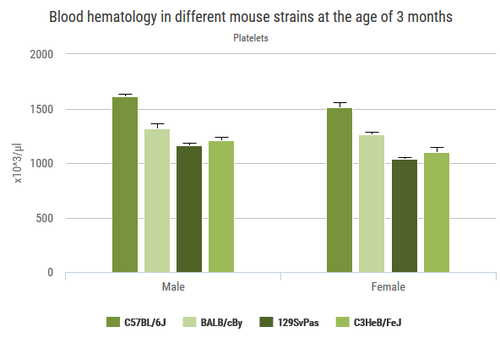
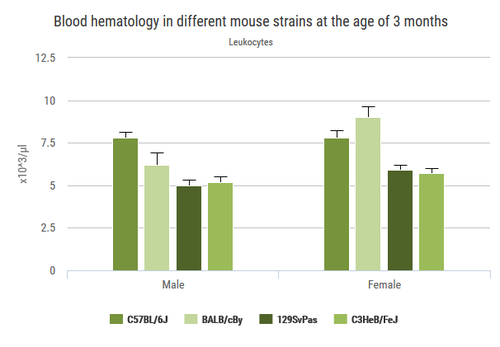
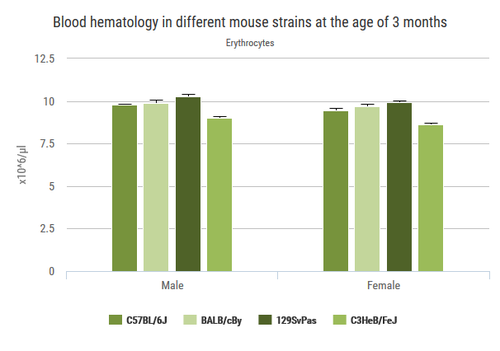
ST4 semi automated coagulometer (Diagnostiqua Stago, Gennevilliers, France).
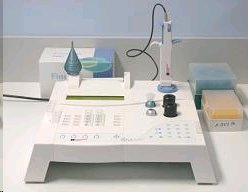
It is recommended to collect blood by intra-cardiac puncture.
Hematological analysis of blood determines blood cell counts (leukocytes, erythrocytes and platelets) and gives hemoglobin levels. Additional hematological parameters (hematocrit, mean cell volume, mean corpuscular hemoglobin, mean cell hemoglobin concentration) can be calculated. The different white blood cells (WBC) lines: neutrophils, lymphocytes, monocytes, eosinophils, and basophils are also identified and counted.
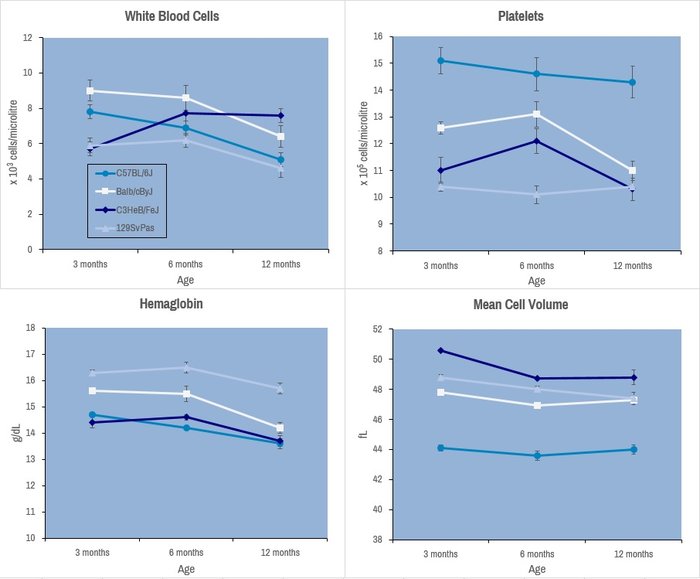
Selected hematology data from female mice (N>17 per line) of common laboratory strains at different ages (Champy et al. Mammalian Genome 2008). Error bars reflect ± SEM.
CBC is performed on an Advia 120 (Siemens AG, Erlangen, Germany) with Veterinary software.
A variety of cytokines and chemokines may be quantitatively analyzed by Luminex bead-based assays including Eotaxin, G-CSF, GM-CSF, IFN-γ, IL-10, IL-12 (p40), IL-12 (p70), IL-13, IL-15, IL-17, IL-1α, IL-1β, IL-2, IL-3, IL-4, IL-5, IL-6, IL-7, IL-9, IP-10, KC, LIF, LIX, M-CSF, MCP-1, MIG, MIP-1α, MIP-1β, MIP-2, RANTES, TNF-α, and VEGF.
MultiPlex analyses are performed on a BioPlex analyser (Life Science/Bio-Rad, Marnes-la-coquette, France).
First-line hematological/immunological analysis of blood or tissue infiltrates for different leukocyte lineages. May be targeted to examine particular immune lineage subclasses.
Exemples:
Thymus:
Spleen:
Blood:
Please see our Immunology dedicated page for more detailed tests.
FACS analysis are performed on a LSR II (BD diagnostics, Le pont de Claix, France).
Quantification of immunoglobulin classes (IgG1, IgG2a, IgG2b, IgG3, IgM, IgA and IgE) in plasma by Luminex bead-based assays.
Immunoglobulins are measured by immuno-analysis on a Multiplex analyser.
Measurement of lipids levels in the liver including total cholesterol, triglycerides and free fatty acids.
A variety of endocrine markers related to metabolism may be quantitatively analyzed by Luminex bead-based assays including Adiponectin, Amylin (active), C-peptide 2, Ghrelin (active), GIP (total), Glucagon, IL-6, Insulin, Leptin, MCP-1, PP, PYY (total), Resistin, and TNFα in any combination.
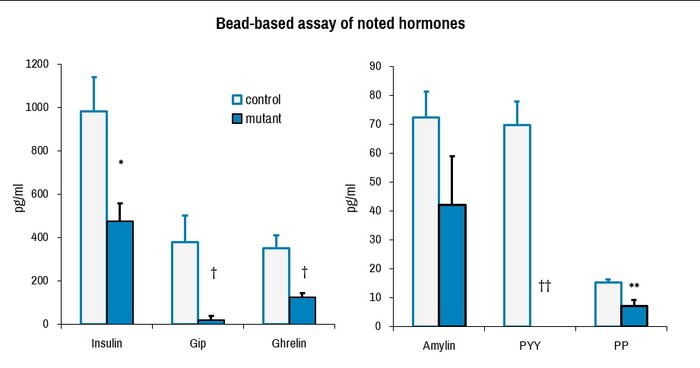
Selected results of a multiplex bead-based assay contrasting plasma from wild-type control mice as well as mutant mice (N=7 per group). *, p<0.05 by Student t-test; **, p<0.01 by Student t-test; †, p<0.05 by Mann-Whitney U-test; ††, p<0.01 by Mann Whitney U-test where mutant values are below detectable limits.
Metabolic markers are measured by immuno-analysis on a Multiplex analyser.
24 hours urine are collected in metabolic cages (Techniplast) for the evaluation of renal function.
The following parameters: Na, K, Cl, glucose, urea, creatinine, total proteins, albumin, calcium (Ca), phosphorus (P), are measured in plasma and urine.
Plasma and urine osmolarity can be determined on an Osmometer (Fiske associates).
Creatinine clearance and fractional tubular Na re-absorption are calculated.

Selected parameters from metabolic cage collection used to analyse renal function of C57BL/6J mice upon provision of diets with different sodium (Na) content. Standard diet = 0.25% Na+; Low Na diet = 0.03% Na+; High Na diet = 3% Na+. Error bars reflect ± SEM.
Urine is collected over 24h in metabolic cages (Techniplast, France).
Urine chemistry is performed on an AU-400 automated laboratory work station (Beckman Coulter France SAS, Villepinte, France).
Urinary albumin is measured by ELISA.
Analysis can be done on “spot urine” or on urine collected in metabolic cages.
To evaluate renal function, analysis of urine collected over 24 hours must be performed in parallel with plasma.